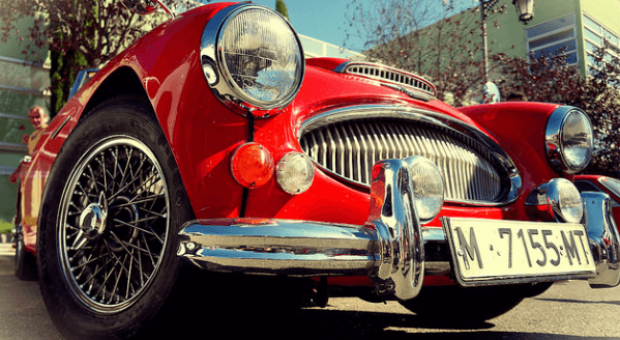
The Ultimate Guide To Restoring A Classic Car
For a petrolhead, there is nothing better than bringing an old classic car back to life. These classics are the reason we got into motoring. The beautiful Austin Healeys, the huge Mustangs and the formidable Cadillacs. These cars define our motoring past. As with everything, trends move on and many of these cars fell into disrepair. It’s our job, as car enthusiasts, to take these cars and bring them back their former glory.
Following on from our post about buying a classic car, today we’ll look at the intricacies of restoring one. Restoring a classic car is truly a labour of love. It’s the chance to get deep into car history and be a part of it. It’s your chance to breathe new life into something special. Not only that, but it’s a great investment. There is still a strong price to be had for a mint condition classic. If you can find a fixer-upper and bring it to life, you stand to make some good money.
Of course, restoring a car isn’t for the faint hearted. It will take time, hard work and some mechanical skill and knowledge. You’ll spend your weekends hunting down rare spare parts and tweaking the engine. To many, this will be perfect. It will give you a chance to hone your mechanic skills and do something you love. Unfortunately, there are many mistakes to be made along the way. We’ll show you how to avoid them.
Find the right vehicle
Your entire project depends on the vehicle you buy. Don’t rush into anything and do as much research as possible. As a car fanatic, you probably already have that perfect car in mind. It’s the one you used to draw as a child. The one that makes you feel excited when you picture it in your head. Now, you just have to find it. The condition of the car is a big factor here as it will dictate the workload in your project. For the first-timers, it’s worth looking for something that doesn’t involve too much work. Keep things simple and get a taste for it. For those who are ready for a challenge, you can seek out the real bargains. But, they’ll need a lot of work. Get a feel for what’s out there before you commit. Browse online dealers like GK Group and visit classic car auctions before you buy.
Find a place to work
Restoring a classic car is no mean feat. You’ll need a dedicated place to work. A garage is ideal as it is protected against the elements and will keep your car free from rust. However, you’ll need plenty of space so make sure the garage is big enough. Ideally, you’ll want to get under the car to work on the under carriage. Find room to jack the car up and easily walk around the vehicle. Remember, you’ll also need all sorts of tools and a safe, reliable place to keep them.
Take your time
As we said, restoring a classic car is a labour of love. You should enjoy every second of it. Try not to rush the process as you’ll only find it frustrating. Restoring a classic car is fraught with difficulties and obstacles. Parts are often very hard to come by and it could take weeks or months to track them down. Set yourself a schedule and be realistic; it will help you enjoy the project a lot more. Restorations can take over a year for particularly run-down cars. If this scares you, look at tackling a car that needs less work.
Find a classic car community
There’s nothing more powerful than a little encouragement and friendly advice. There are hundreds of online resources with communities of car lovers. Visit classic car forums and find niche communities for your particular car. Get involved in the discussions and introduce your project. You’ll find that plenty of people will be interested in your progress and ask for photos and updates. These communities will help you find answers to troubling repairs. They may help you locate tricky parts. Most importantly, they’ll pick you up when you’re feeling disheartened.
Set a budget
Although car restoration is a passion project, try to stick to a budget. It will give you structure and boundaries. In all likelihood, you can’t imagine the possibility of selling it on. However, if it comes to that, it’s ideal to make a profit. You can do that by sticking to a budget. Make an inventory of all the parts you’ll need. Assess what repairs you can do yourself and where you might need professional help. Include the cost of any tools in this as well. A budget is also a good way to plan out what you need.
Find the right parts
Finding parts is the crux of any restoration project. You have a decision to make here, as there are two schools of thought. Restoration purists will always seek out the original part. That’s the same name and fitting that came in the original car. Naturally, in classic cars, these can be very rare and difficult to track down. The other school of thought is less specific. Many will happily replace an exhaust for a new, modern equivalent. This method keeps the car in better condition and it will run longer. However, some would argue that it loses the essence of the car. It’s entirely up to you. You’ll find original parts by scouring local scrap yards and salvage centres. There are also tons of resources online now too.
Fix repairs
For an experienced car buff, many of the repairs can be done yourself. Know your limits with this one. Get stuck in where you feel confident, and tackle all of the basic repairs and tweaks. Having said that, don’t be afraid to contact professionals for help and advice. Take it to a classic car garage if you’re having trouble. They’ll know what to do.
Most importantly, have fun doing it. Of course, the end product is the goal. The ability to drive your classic car out on the road is worth every second of hard work. Just remember, the journey is as important as the destination.
Photo credit




















